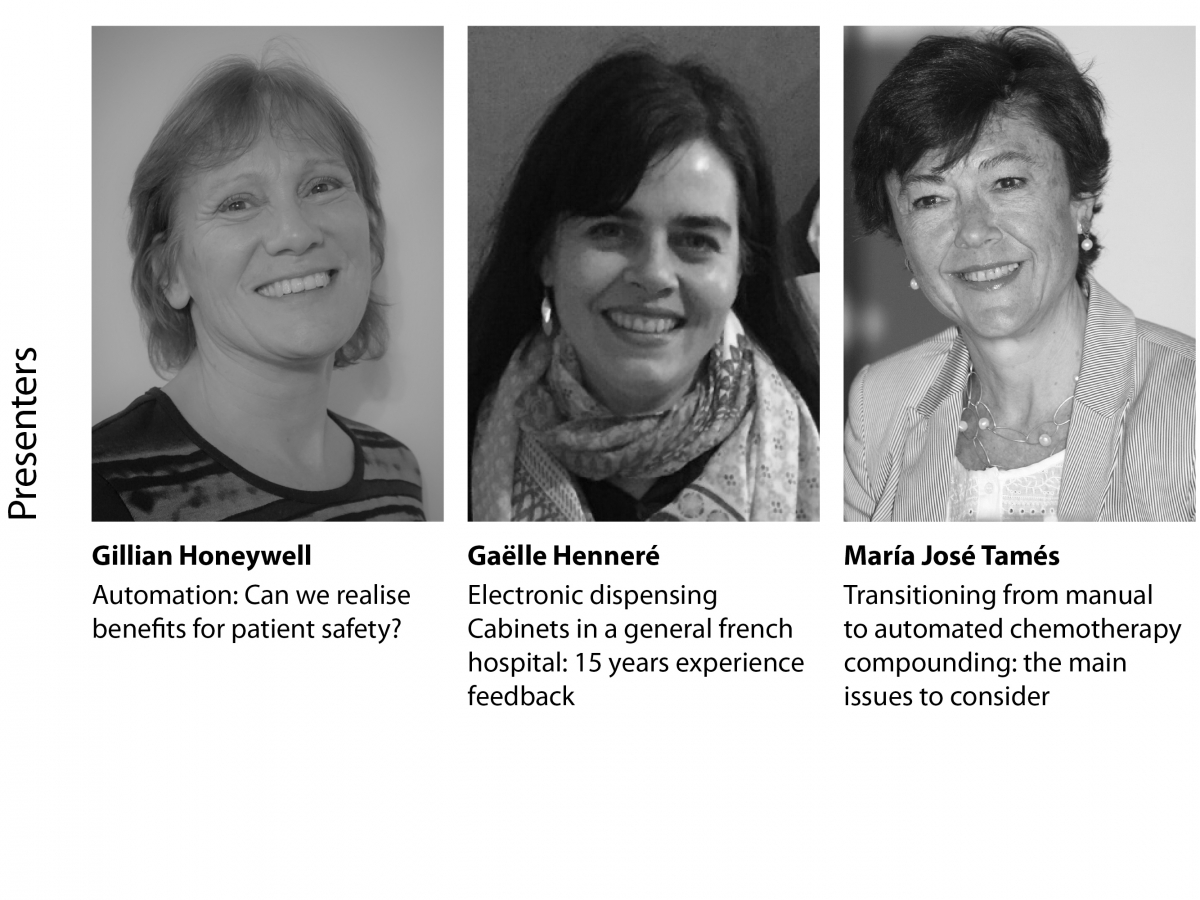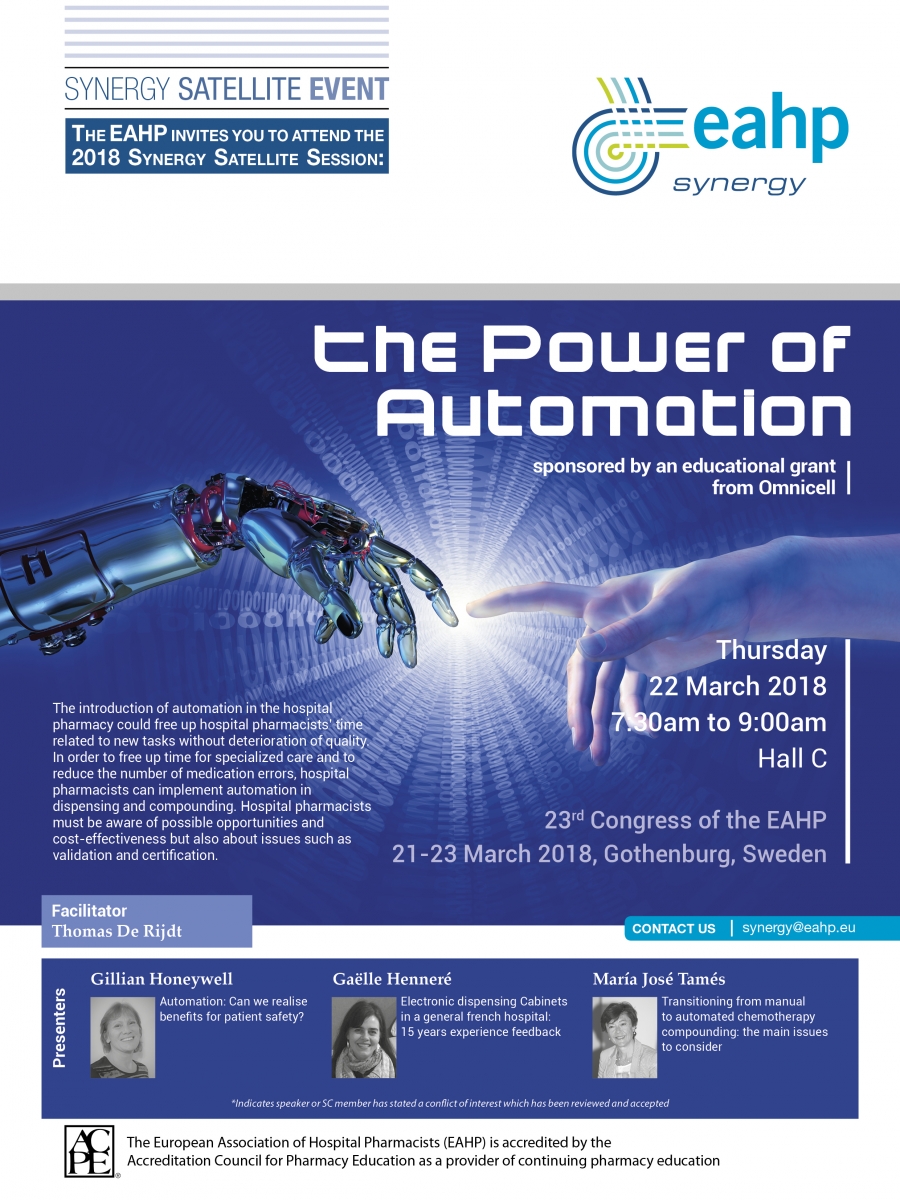
Linked to EAHP Statements
Section 2 – Selection, Procurement and Distribution: Statements 2.2, 2.6
Section 3 – Production and compounding: Statements 3.2, 3.3, 3.4, 3.5
Section 5 – Patient Safety and Quality Assurance: Statements 5.5, 5.10, 5.11
ACPE UAN: 0475-0000-18-008-L04-P. A knowledge based activity.

Abstract

For over a century hospital pharmacists were focused on manual work and logistic burden of compounding and dispensing. To improve patient safety, they shifted this focus the last decades from product towards therapy and the implementation of clinical pharmacy and clinical validation. But the basic tasks must continue to maintain the highest quality to prevent medication errors. The introduction of automation in the hospital pharmacy could free up hospital pharmacists’ time related to new tasks without deterioration of quality.
In the distribution process automates are already quite well established. Picking robots, electronic dispensing cabinets, automated guided vehicles, pneumatic tubes, single-dose dispensing machines and maybe shortly drones found their way to the hospital pharmacy. They allow to work faster, to reduce error rate, to implement traceability and so much more. But they also introduce new possible risks with which the pharmacist has to deal.
And the rise of the machines continues. More and more hospitals implement automation in compounding, varying from simple in process controls as scanning and weighing, over automated pumps to fully automated compounding robots for cytotoxic drugs. Trusting the patient’s life to the machine requires a validated process and risk management under responsibility of the hospital pharmacist.
The hospital pharmacist can use the power of automation wise to free up time for new clinical tasks to improve quality and patient safety.
Learning objectives
At the end of the synergy session, participants should be able to:
- Identify the opportunities and pitfalls of implementing automation in the hospital pharmacy;
- See that automation frees up personnel time for newer tasks; and,
- Name the most important concerns for the risk analysis for automation.
Educational need addressed
In order to free up time for specialized care and to reduce the number of medication errors, hospital pharmacists can implement automation in dispensing and compounding. Hospital pharmacists must be aware of possible opportunities and cost-effectiveness but also about issues such as validation and certification.
Keywords
Automation, compounding, dispensing, technology, traceability, medication errors, freeing up time



























